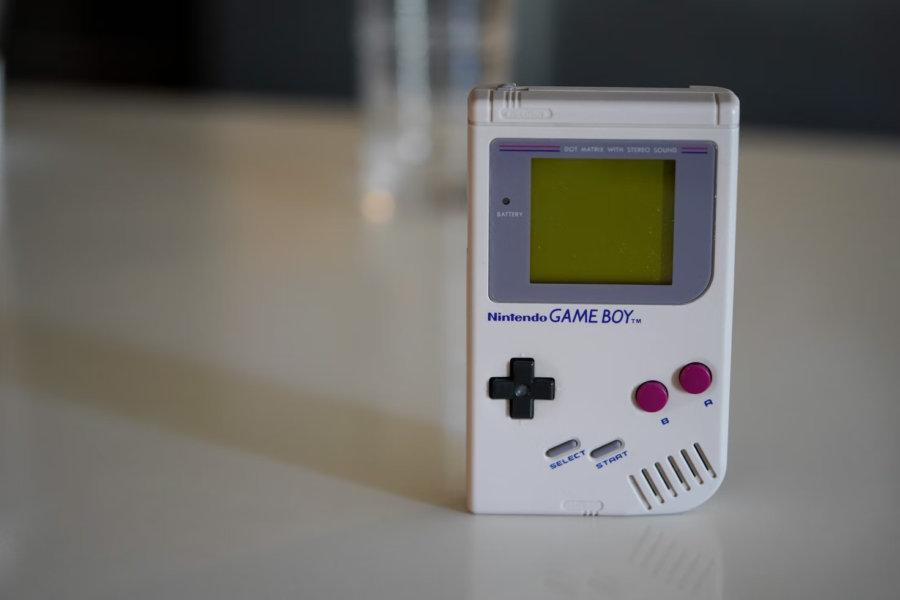Technology of the Last Generation
What was it like using technology from the previous generation?
The Game Boy, approximately four inches by six inches, was one of the first handheld video game consoles to be released by Nintendo.
Technology has the power to define generations. For Generation Z (Gen Z) – born between 1995 and 2012 – that might be the smartphone. But for millennials – born between 1980 and 1994 – it might be the Walkman.
Because technology continues to evolve at such a remarkable pace, much of the technology of today may likely be lost in the next generation. It has happened before. Those born in the late 2000’s and beyond have most likely never used a VHS, a cassette tape recorder, or a Walkman, as a shift to sleeker technology caused a sharp decline in these once-popular devices.
Jolly Zheng ’22 said, “I haven’t heard of any technology made before the 2000’s, but I have seen old TVs. I used to have a super old, bulky TV for the longest time when I was younger.”
Videocassette Recorder (VCR) and Video Home System Tapes (VHS)
A VCR is a device that records audio and video from broadcast television onto a magnetic cassette tape, typically a VHS. At the time, recording footage to watch at a later date was known as “timeshifting.” VHS tapes were commonly used to store home videos and movies.
The system of playing back VCR footage on a VHS tape was released in the late 1970’s by Yuma Shiraishi and Shizuo Takano, two engineers at a Japanese electronics company called Japan Victor Company (JVC).
After the release of VHS tapes, 32 million copies of The Lion King were sold for the VCR, with sales generating about $520 million in revenue.
The release of the Digital Versatile Disc (DVD) and Blu-ray in the late 1990s marked the decline of the VHS. Compared to the VHS, DVD’s were more convenient, higher quality, and much cheaper to manufacture. In 2005, films were no longer sold on VHS tapes, and in 2008, JVC stopped producing VHS tapes.
Sony Walkman
Sony’s Walkman, released in 1979, is a portable cassette player that followed the development of a compact cassette, a tape that stores recorded music. The music player was around five inches by three inches by one inch and was convenient to bring anywhere.

There were more than 100 million Walkmans sold worldwide a decade after its initial release. The decline of the Walkman was caused by the creation of portable compact disc (CD) players. Although, like all older technologies, the Walkman was phased out, it has had a profound impact on the tech world. Its portability allowed people to personally listen to their own music and resulted in an increase in headphone users in public.
Game Boy, N64, NES & Atari 2600
Like video recording devices, gaming consoles have also rapidly evolved, growing in quality and functionality with each edition. One of the first video game consoles was Atari Video Computer System’s (Atari VCS) Atari 2600, which was released to market in 1975. The Atari 2600 was a low resolution console that allowed users to play a number of arcade classics, like Combat, Space Invaders, and Pac-Man. For a video game system, the Atari 2600 lasted a long time, but it was eventually discontinued after around fifteen years.
A few years later, another popular video game company was created that further revolutionized home video games: Nintendo. In 1983, Nintendo released the Nintendo Entertainment System (NES). The NES was one of the first consoles to enable third-party developers to produce games for the device. It introduced a number of timeless games, including Super Mario Bros. and The Legend of Zelda.
Nintendo also developed the Game Boy, a handheld video game console released in 1989. The device includes technology from Nintendo’s previously-released NES. With the Game Boy, consumers had more timeless games at the tip of their fingertips with Super Mario Land and Tetris among them. Compared to other consoles of the time, Game Boys were less expensive and more durable. A little less than half of Game Boy users worldwide were female, an unprecedented high percentage at the time.
Continuing its dominance as a video game console manufacturer, Nintendo developed the Nintendo 64 (N64), the successor to the NES. With enhanced performance times and durability, the N64 rose to popularity. The trident-shaped controller sets it apart from other video game consoles. Following the pattern of gaming consoles, the flair of the N64 fizzled out with the inception of sleeker consoles, like the modern-day PlayStations and Xboxes.
***
While much of this technology has been pushed aside, its applications are still present in the technology of today. The modern-day cell phone, for instance, has the video recording and playback capabilities of a VCR, the portability of a Walkman, and the graphical power to host games like Pac-Man. With the speed that technology is evolving, it is easy to imagine a world where even the cell phone is lost on the next generation!
“I haven’t heard of any technology made before the 2000’s, but I have seen old TVs. I used to have a super old, bulky TV for the longest time when I was younger,” said Jolly Zheng ’22.
Jillian Chong is an Editor-in-Chief for ‘The Science Survey.’ As a journalist, she loves that she has the ability to voice her opinions and inform...

